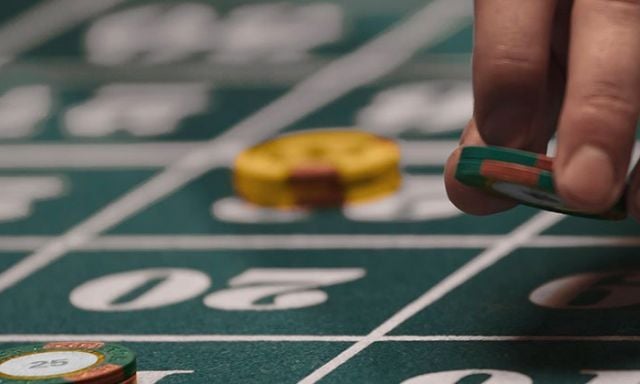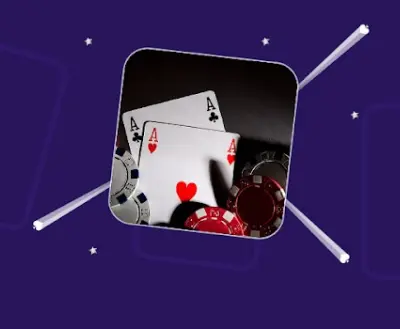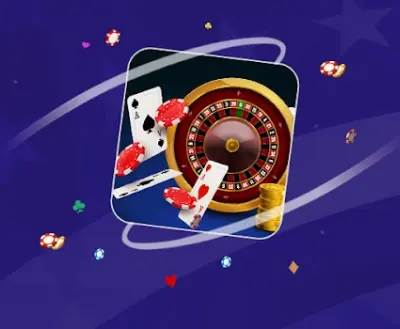Content Summary:
Understanding European Roulette
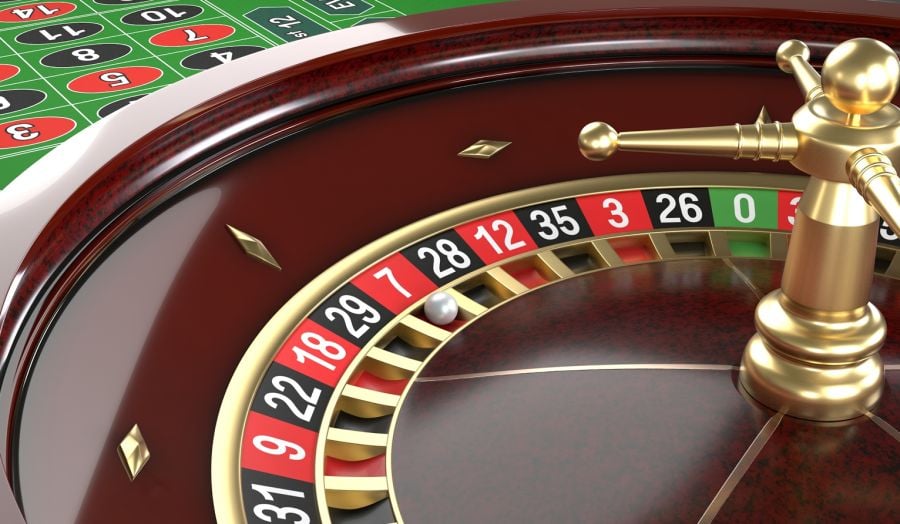
The objective of European roulette is to correctly predict where the ball will land on the roulette wheel. Players can increase their chances by placing bets on groups of numbers that have a common characteristic.
Bets can be placed until the dealer announces "no more bets" before the wheel is spun or while it is spinning. In some land-based casinos, players are given chips of different colours to easily distinguish their wagers. It's important to keep in mind that the odds and payouts can vary depending on the type of bet placed.
So, how do you play European roulette? If you’re just starting out, don’t worry - this guide to playing European roulette has all the information you need, from the basic rules, table layout, bet types, the numbers they cover, to the level of returns you can expect for landing on any of the numbers covered.
Basic Rules of European Roulette
When playing European Roulette online, the betting process is simple. The player places their chips on their desired bet and clicks the "Spin" button. Once the betting round is over, they can choose to place another bet by clicking the "Rebet" button or to end the game by clicking the "Clear Bets" button.
In land-based casinos, the game is usually run by four casino personnel. Two of them, known as croupiers, handle the bets and spin the ball on the roulette wheel. The other two, known as "table-end" and "game supervisor," ensure that the game runs smoothly.
The number of players at the roulette table can range from one to eight. The game begins when the croupier calls out "Place your bets." Players can then make their desired bets. The croupier spins the ball on the roulette wheel and calls out "No more bets" as the ball approaches the end of its spin.
After this point, any additional bets will usually be disregarded. When the ball lands in one of the 37 pockets, the croupier announces the winning number. The losing bets are taken by the house, and winning bets are paid out to players.
The Table Layout of European Roulette
European Roulette is a popular casino game that can be played on a table with a wheel at one end and numbers representing betting options at the other. The European variant has 37 numbers on the wheel, with one of them being 0, which sets it apart from American Roulette which has 38 numbers (we talk more about this in our American vs European Roulette: The Ultimate Guide article).
Bets can be placed on any number, a range of numbers, the color (red or black), or whether the outcome will be odd or even. In order to start playing, players must place their chips on the outcome they wish to bet on. Each betting option offers different chances of winning and corresponding payouts, for example, betting on a single number has a low probability of happening (2.7%) and pays 35:1.
European Roulette betting options are divided into two categories, inside and outside bets. Inside bets offer higher payouts but have lower chances of winning, while outside bets have lower payouts but better chances of winning. For better odds, it's recommended to use outside bets if you're not feeling particularly lucky.
European Roulette Bets and Odds
Inside bets
Inside bets are betting methods that relate to the ‘inside’ numbers on a roulette table – either the single numbers, or lines between those numbers, which covers a range of possible bet types.
Bets are single bets, placed on a single number. Please note that it’s imperative you place your chips directly in the middle of the number on the roulette table, and not touching any of the lines around the numbered box.
Straight Up Bets
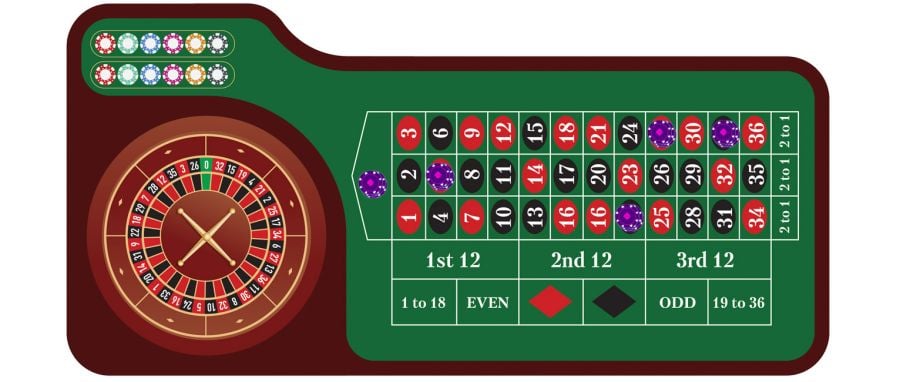
You can play a straight up bet on any number on the roulette wheel, including on the zero. This is the most common type of roulette bet, arguably the default, and pays out at 35-1.
Split Bets
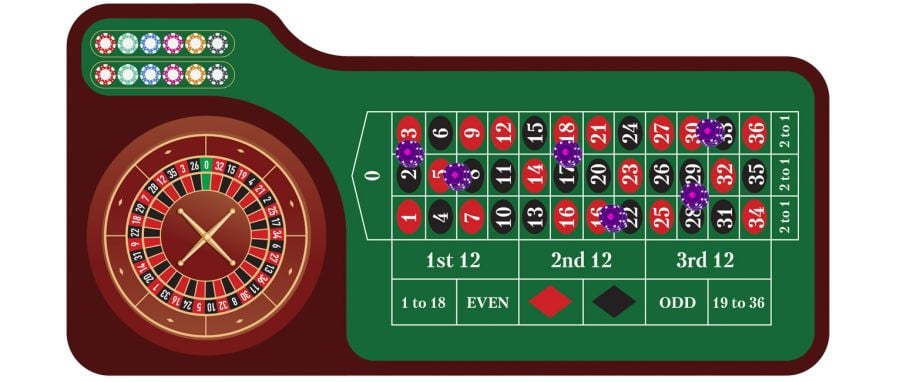
These are bets placed on any two numbers by putting chips on the lines between their positions on the roulette layout. If either of the two numbers covered comes up a winner, players are paid out at 17-1. Note that this is slightly less generous than a straight up bet, but obviously gives you the coverage of two numbers rather than one in each spin.
Street Bets
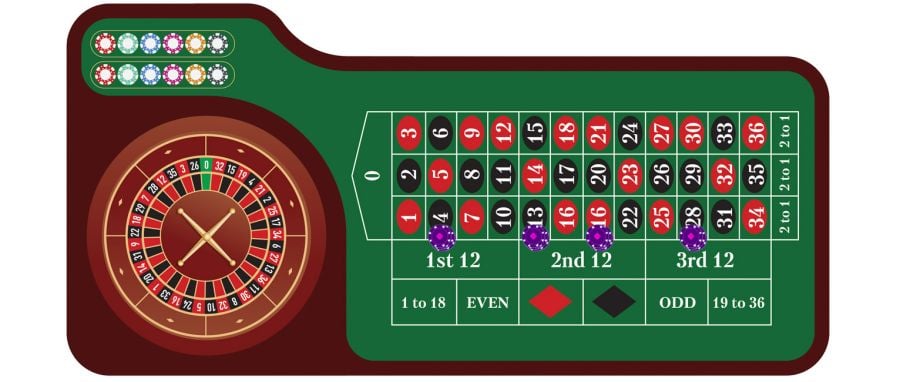
These are bets on any of the three number rows of numbers on a roulette layout – in this case, your bet is that the ball will land on any number covered by the row you’re betting on. These bets pay out at 11-1, following the same pattern as before – less generous odds, for more numbers covered. The bet is placed by putting chips on the margin of the outside line of the first number on a row.
Corner Bets
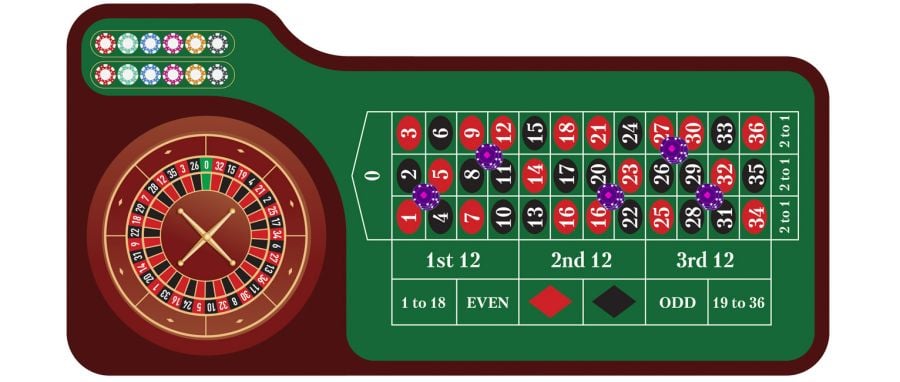
These are placed in the middle of any square of four numbers on the layout, covering each of those four bordering numbers for your bet. This pays out at 8:1, and you’ve got four chances to land a winning number on each spin.
Six Line Bets
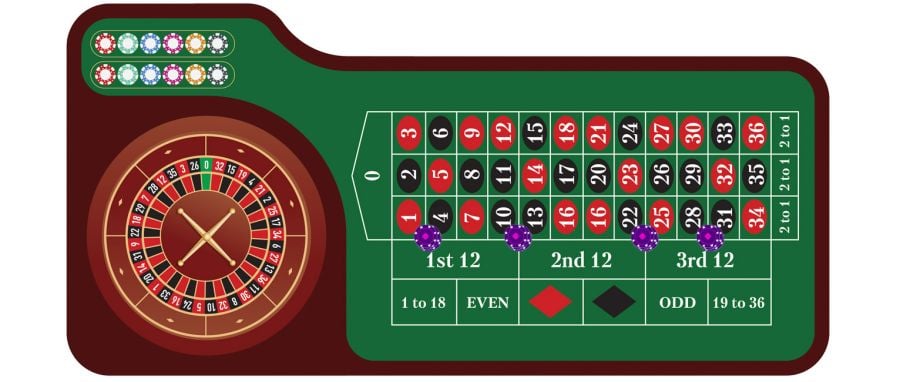
These are placed on any two three number rows, by placing chips at the junction of the outside line – like a cross between a street bet and a split. These payouts at up to 5:1, bringing six numbers into play on the table at any one time.
Outside Bets
In contrast to the inside bets, outside bets are betting methods which are denoted around the outside of the roulette table – rather than the numbers, these are separately marked on the table layout, and are often considered the ‘special’, i.e. non numerical bets.
Dozen or Column Bets
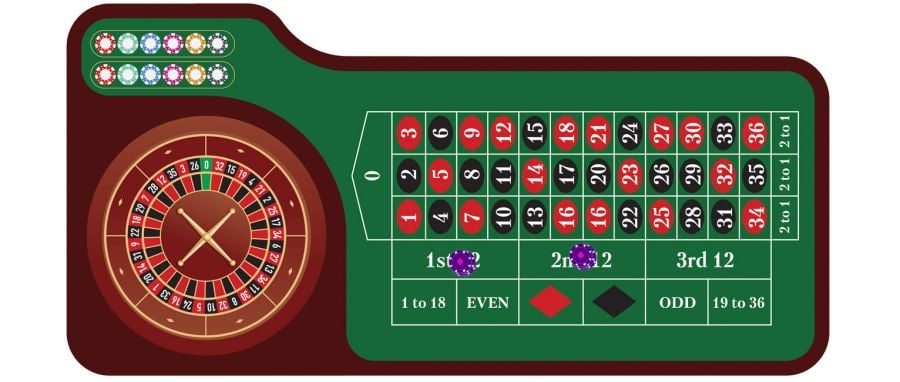
These are bets on any 12 numbers, broken down into their respective dozens. This pays out at 2:1, which applies to any of the dozens as well as any of the column bets.
Odd or Even Bets
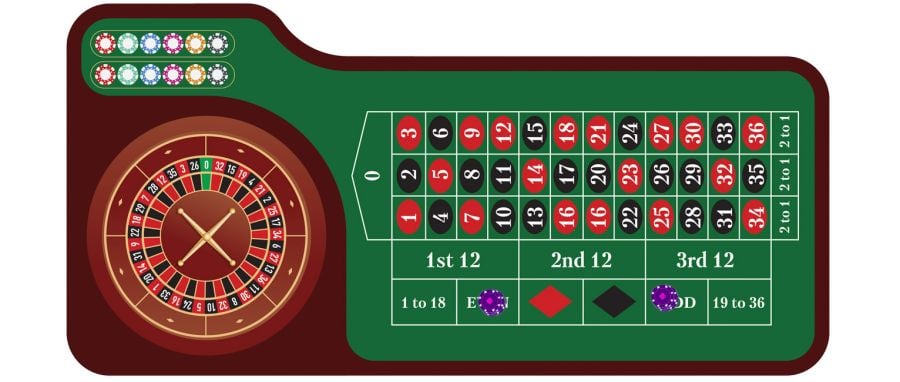
This is a 1:1 bet, which as the name implies covers only the odd or even numbers. If an odd number comes up, and you’ve bet on odds, you’re a winner – it’s as simple as that.
Red or Black Bets
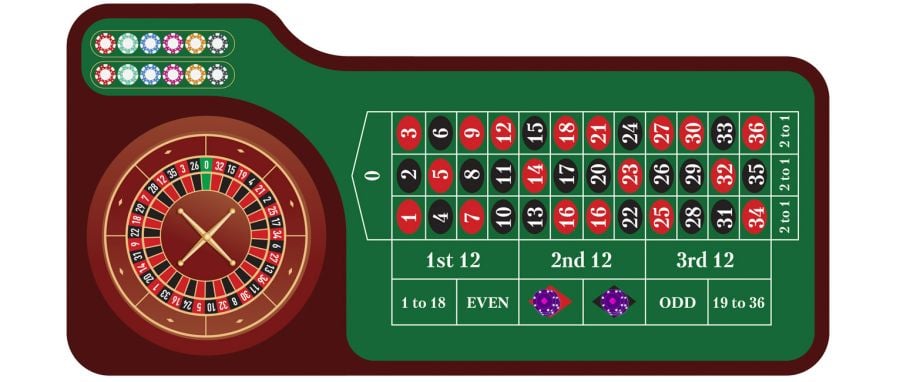
This is a bet placed on the colour of the number that the ball will land on. If the player chooses to bet on red, for example, and the ball lands on a red number, the player wins. If the ball lands on a black number, the player loses. This bet pays out at even money 1:1 meaning that if you bet £1 on red (or black) and win, you will get £2 back (your original £1 plus £1 in winnings). The probability of winning this bet is 48.65%.
Low or High Bets
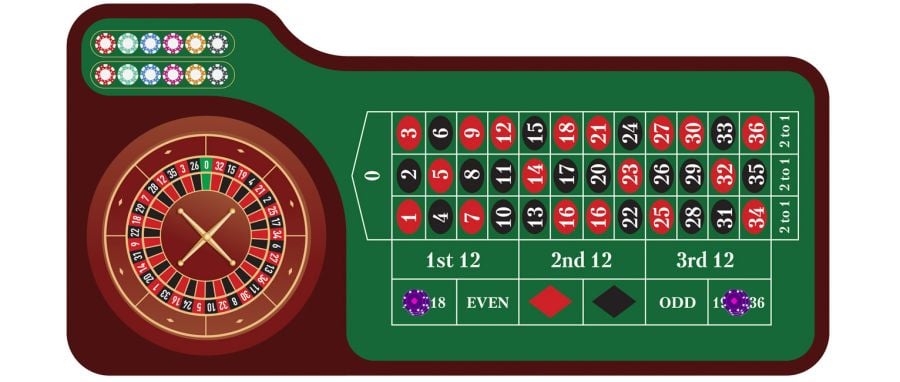
This is a bet placed on the numbers being low or high. The numbers 1 to18 are considered low and the numbers 19-36 are considered high. If the player chooses to bet on low and the ball lands in between 1 to 18, the player wins, if it lands in between 19 to 36 then the player loses. This bet also pays out at even money 1:1 with a probability of winning of 48.65%.
Key Takeaways: How To Play European Roulette?
To summarise this article on how to play European roulette, we have provided 2 key takeaways:
- The action in roulette unfolds on a spin by spin basis. Players are invited to place their bets on the table layout (or virtually on a screen, where applicable), with bets indicated by the position and quantity of chips on the table. The croupier will then declare the game to be underway, and spin the wheel and the ball in opposing directions.
- When the croupier calls the results, you’ll know whether your bet has come up a winner. From here, you’ll be paid what you’re due, and the game will begin again for another round.
By understanding the basic rules, the different types of bets and payouts, as well as knowing how to play roulette, you’ll now be able to make better decisions about your preferred European roulette strategy.
If you are feeling confident, why don’t you try playing online roulette at PartyCasino? Of course, there, you will find European roulette – so you can try out what you’ve learned here.

